Lindsay, the last bastion of civilization before the wild north of cottage country. If you could call Lindsay a “Bastion of Civilization.” I wrote that quote many many years ago now in a short story about a rather frightful drive up to a cottage. Honestly looking back, the story is terrible. But the quote, the quote has lived on and seemed to have gotten around a bit especially among friends from PYPS who are from and some still live in Lindsay, Ontario. Having spent the morning in Coboconk (which as an aside also features in that story) doing my first photo shoot in a long time, I decided to stop off in nearby Lindsay on the way home for the week’s roll.

Nikon FM – AI-S Nikkor 35mm 1:2.8 – Fomapan 100 @ ASA-100 – Ilford Microphen (1+1) 9:00 @ 20C
The earliest humans to setting in the Kawartha Lakes regions were the Anishinabeg, the traces of their civilization can still be seen today about an hour and a half away at Petroglyphs Provincial Park. These rock paintings are the oldest and largest such paintings ever found in Canada. The Huron-Wendat and most recently the Haudenosaunee lived on this land. Treaty 20 in 1818 ceded the territory to the British Crown. Colonel Duncan McDonell would be assigned the survey of the Township of Ops and Lots 20 and 21 of Concession 5 set aside as a future township. But it was not the British who were the first to settle here. An American family, the Purdies were the first to establish a dam and a pair of mills in 1827 on the Scugog River. The Purday Dam caused problems further south flooding a great deal of swamp forming Lake Scugog and locals marched in and destroyed the Purdy Dam, although the damage was done and the lake remained. The small settlement grew up around the mills, taking the name Purdey’s Mills. The town plan was laid out by John Huston, laying out streets and lots by 1834 during the survey one of John’s associates a Mr Lindsay was accidentally shot and died, the village took the name Lindsay as a result when it was incorporated as a village. Like many rural communities, agriculture and lumber were the primary industries for many years. But being a rural community, access to the rest of the province was difficult. It wasn’t until the arrival of the first railroad in 1857 that major growth would take place. Lindsay was incorporated as a town in 1861 and named the seat of Victoria County. Although the expansion would be cut short when a fire that same year destroyed much of the town. But within ten years the community had nearly fully recovered and the town had become a major railroad hub, with the town hosting three separate railroads and the operational headquarters of the Midland Railway (which would become part of the Grand Trunk). Sir Samuel Hughes called Lindsay home during his lifetime, laying the cornerstone of the Lindsay Armoury in 1913 during his tenure as Minister of the Militia. The community would fly under the radar through the early part of the 20th century, the railroad would slowly leave in the post-war era returning the community to a sleepy rural town on the way up to cottage country. In 2001, Lindsay along with several smaller villages and towns of Victoria County were incorporated into the City of Kawartha Lakes with Lindsay as the seat of the city government.
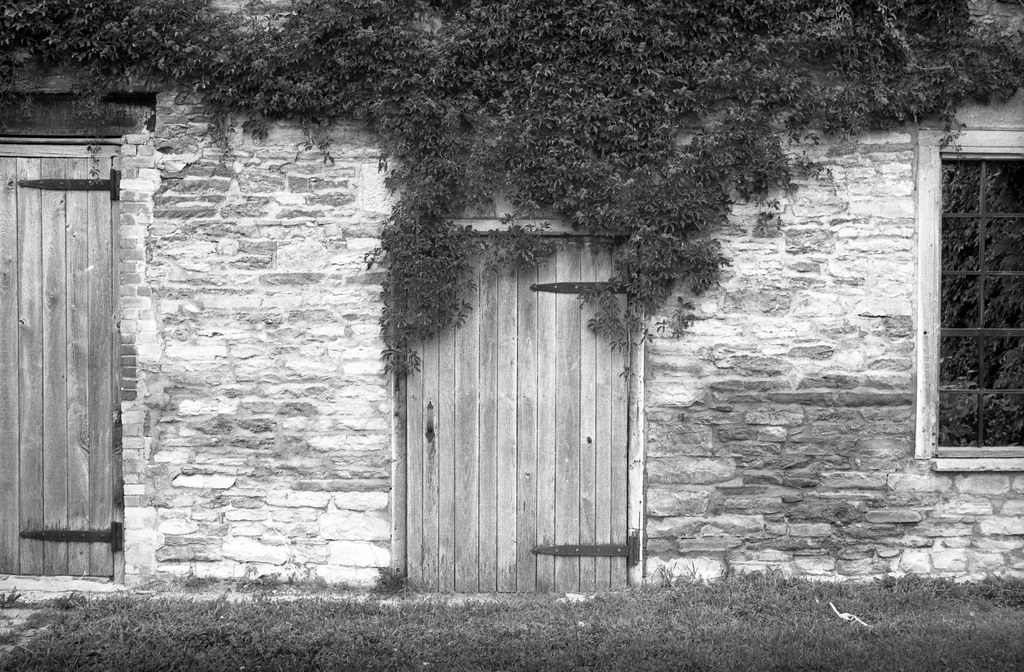
Nikon FM – AI-S Nikkor 35mm 1:2.8 – Fomapan 100 @ ASA-100 – Ilford Microphen (1+1) 9:00 @ 20C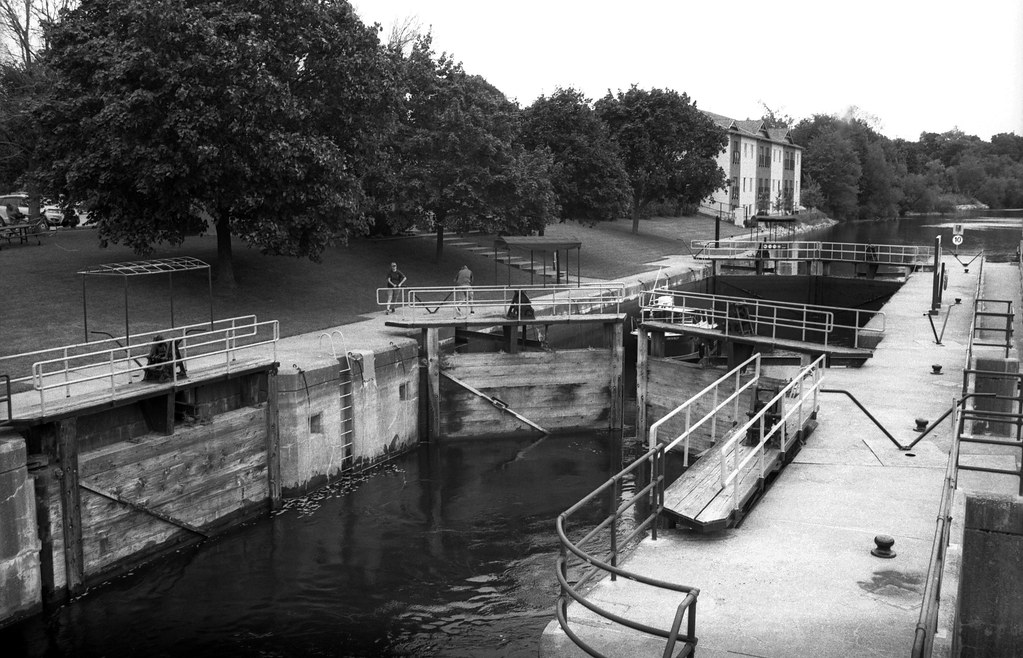
Nikon FM – AI-S Nikkor 35mm 1:2.8 – Fomapan 100 @ ASA-100 – Ilford Microphen (1+1) 9:00 @ 20C
By titling the week “The Last Bastion” I decided to play off that a little bit more in my choice of images this week by looking mainly for buildings that had that castle-like appearance. At least, for the most part, there are two notable departures. The first being the establishing feature shot, being the looking down the main street which I tend to keep to for when I visit a town or a city. The second being the local lock of the Trent-Severen waterway, the reason here is that it is a fine example of a 19th-century canal and one that remains in operation today. Like the Rideau Canal, the Trent-Severn locks are manually operated by Parks Canada Staff. Form these two, I filled in the remaining images with bastion-like structures that caught my eye. St. Andrew’s Presbyterian with the squared-off bell tower and mid-century loudspeakers mounted at the top. The C.L. Baker Building with the rounded top front windows that screamed industrial, I wish I had stopped in to pick up some bottles of a local brew! As I moved further along the main drag, I saw the local public library tucked away with its Greco-roman styled entrance and the true castle of the community the Victoria Park Armoury. And one that I had never noticed before but it certainly is eye-catching as it doesn’t follow the designs of other contemporary armouries across Ontario. Sadly I did miss some other interesting buildings, such as the Kawartha Lakes City Hall and the Old Gaol further away from the downtown.
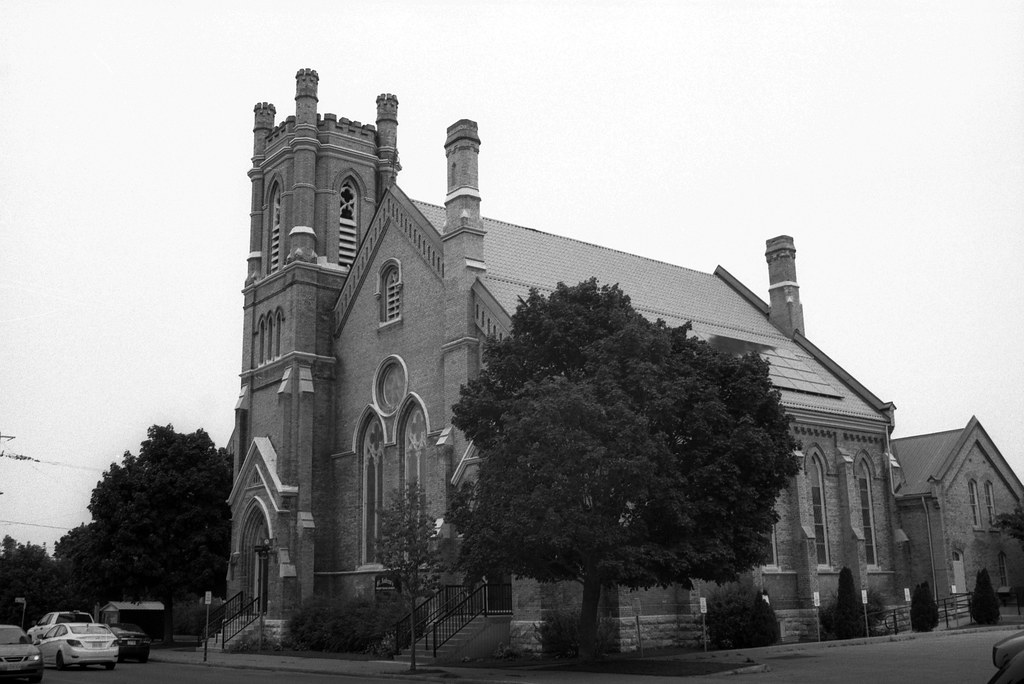
Nikon FM – AI-S Nikkor 35mm 1:2.8 – Fomapan 100 @ ASA-100 – Ilford Microphen (1+1) 9:00 @ 20C
Nikon FM – AI-S Nikkor 35mm 1:2.8 – Fomapan 100 @ ASA-100 – Ilford Microphen (1+1) 9:00 @ 20C
While we’ve had a good run recently of lovely sunny days and the day I was out had started off wonderfully sunny which was good for my early morning photography efforts, by the time I was doing the family shoot the clouds had started to roll in. But again, that worked in my favour to help defuse the light and with a flash got things to pop nicely. By the time I rolled into Lindsay the light had gone flat, so I decided to stick to something simple. Knowing the main street was fairly wide I stuck with my Nikkor 35mm f/2.8 lens and left the yellow filter off this week as I didn’t need that extra kick. I shot the Fomapan 100 at its box speed of ASA-100 which gave me plenty of good apertures and shutter speeds. For the developer, I had mixed up some Ilford Microphen as I had planned to under-expose and push a roll of Ilford FP4+ and Cinestill BwXX so I used that for my Fomapan 100 also. Developing was at a 1+1 dilution and I’m happy with the results, decent tone, almost no grain and still maintaining a decent sharpness plus a developing time under ten minutes can’t go wrong. I think I’ll save my second box of Microphen to try out on Fomapan 200 and Fomapan 400 later on in the year.
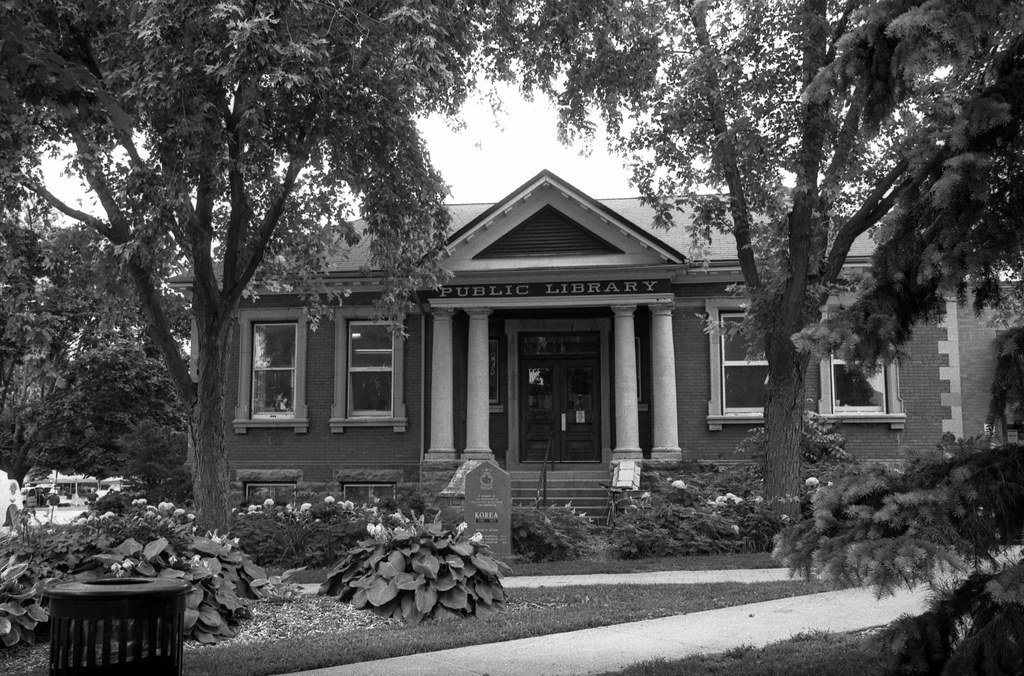
Nikon FM – AI-S Nikkor 35mm 1:2.8 – Fomapan 100 @ ASA-100 – Ilford Microphen (1+1) 9:00 @ 20C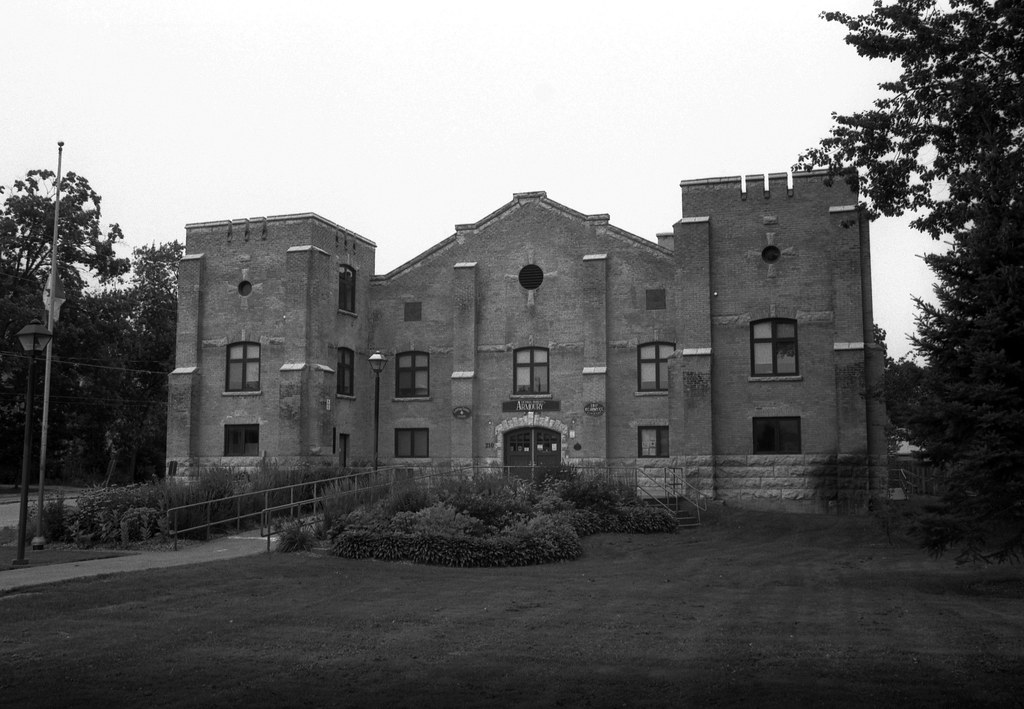
Nikon FM – AI-S Nikkor 35mm 1:2.8 – Fomapan 100 @ ASA-100 – Ilford Microphen (1+1) 9:00 @ 20C
Next week we’re going back in time a little bit over 100 years onto the frontier between the Neautral Swiss and the ravages of the Western Front. Well, we’re not going to Europe, rather a farm in Milton to attending a World War 1 event!